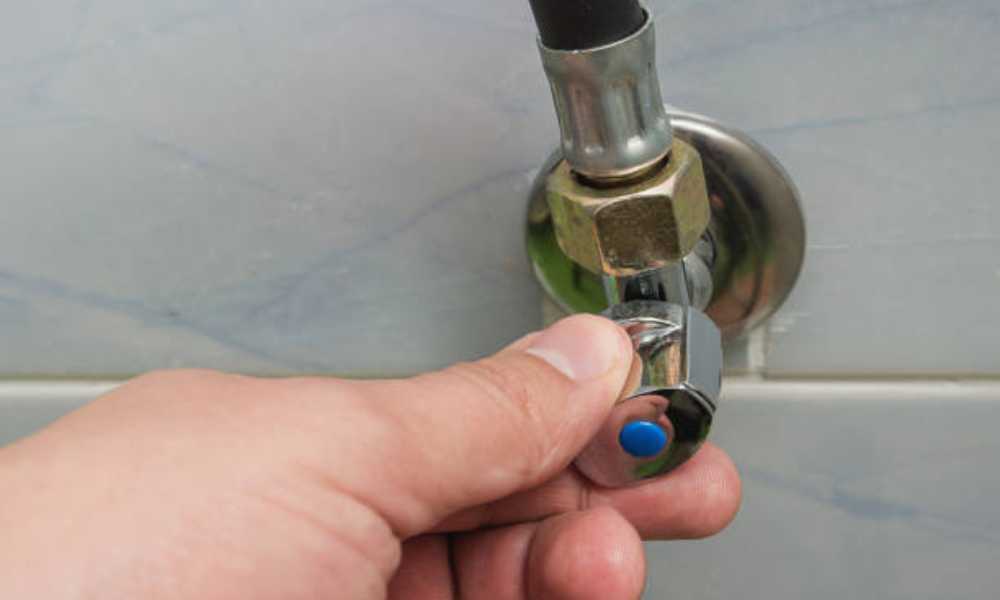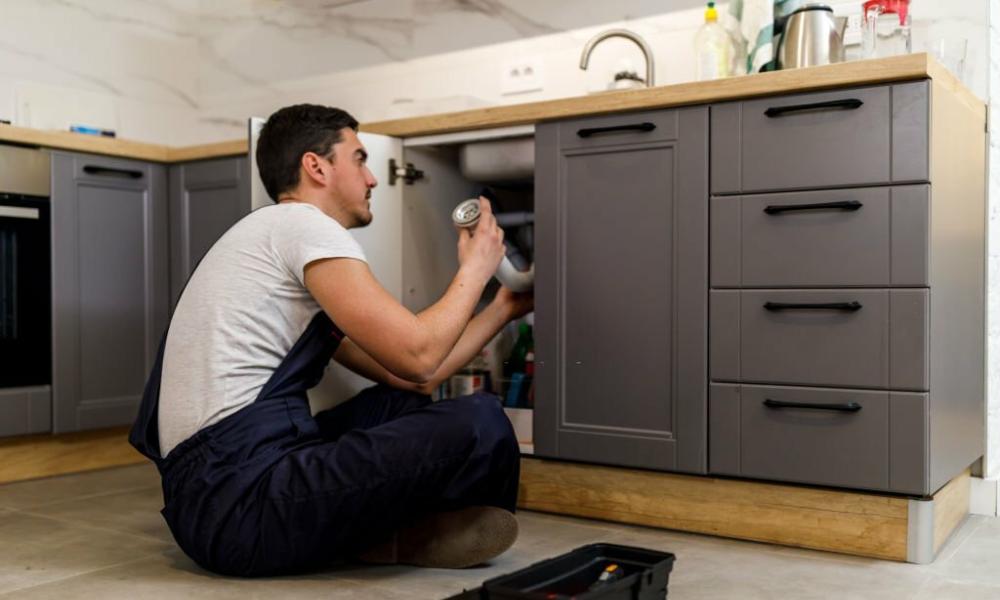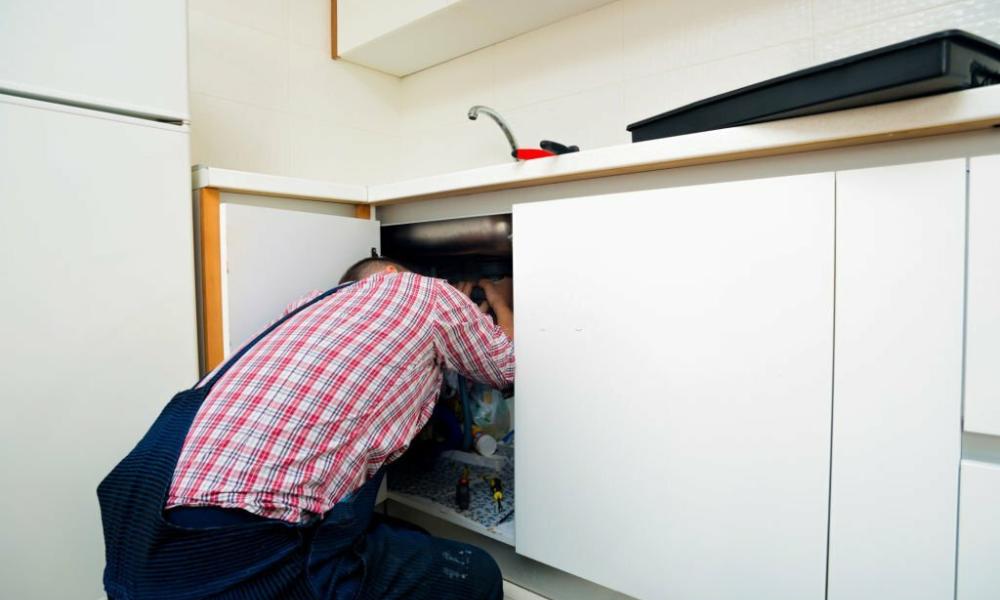Ever been all set to install a new faucet, only to realize the supply line doesn’t quite reach? It’s a common snag that can throw a wrench in your DIY plans, leaving you puzzled and potentially wet! But fear not, because this blog post is your knight in shining armor. We’re tackling the pesky issue of a short faucet supply line head-on, providing you with a step-by-step guide to gracefully extend it. Stick with us, and you’ll soon turn this plumbing predicament into a straightforward task, ensuring your installation flows smoothly without any unexpected hitches.
Understanding Faucet Supply Lines
Understanding faucet supply is crucial for maintaining your plumbing system. These lines are responsible for transporting water from the main water supply to the faucet. Whether you want to replace an old faucet, extend the supply line for a new installation, or customize your plumbing setup, knowing about the types of lines and the materials needed for extensions is essential.
Types Of Supply Lines
There are two primary types of supply lines commonly used for faucets: rigid and flexible. Rigid lines, typically made of copper or galvanized steel, provide durability and permanent installation. On the other hand, flexible supply, often made of braided stainless steel or vinyl, offers easier installation and versatility, especially in tight spaces or with complicated installations.
Materials Needed For Extension
When extending the faucet supply, you will require a few essential materials to ensure a successful installation. These typically include:
- Additional supply line matching the existing type (rigid or flexible)
- Proper fittings, such as compression fittings or soldering materials, depending on the type of supply line
- Adjustable wrench or pliers for tightening fittings
- Teflon tape for sealing threaded connections
- A pipe cutter or hacksaw for cutting the existing supply line
- Measuring tape to determine the required length of the extension
Steps To Extend Faucet Supply Line
Extending a faucet line is a straightforward task that can be done without professional help. Here are the essential steps to extend your faucet supply effectively.
Shutting Off Water Supply
Before extending the supply line, turn off the water supply to the faucet. Locate the shut-off valve under the sink and turn it clockwise until the water flow stops completely. This will prevent any leaks or spills while you work on the supply line extension.
Removing Old Supply Line
Next, unscrew the existing supply line connections using an adjustable wrench. Loosen the nuts and disconnect the old supply line from both the faucet and water shut-off valve. Ensure that all water is drained or wiped off before proceeding to avoid any mess.
Adding Extension Piece
- Measure the length of the extension that you need.
- Purchase a supply line extension kit from a hardware store that matches the required length.
- Connect one end of the extension piece to the faucet and the other end to the existing supply line using the provided fittings.
Reconnecting The Supply Line
With the extension piece in place, reconnect the supply to the faucet and water shut-off valve. Tighten the nuts securely with an adjustable wrench, ensuring there are no leaks.
Once the new extension piece is successfully connected, turn on the water supply and check for any leaks or drips. If everything is secure, your faucet line extension is complete.
Tools And Materials Required
When extending faucet lines, having the right tools and materials is essential to ensure a seamless process. Below are the necessary tools and materials required for extending faucet lines:
Wrench
A wrench is a fundamental tool for loosening and tightening nuts and bolts securely. It provides the necessary torque and grip to efficiently work on the faucet supply. Having an adjustable wrench is particularly advantageous as it can be adapted to fit various sizes of nuts and bolts.
Pipe Cutter
A pipe cutter is crucial for cutting the existing supply line to the required length. It ensures clean, precise cuts, facilitating a smooth extension of the line. Utilizing a pipe cutter minimizes the risk of damaging the pipe, promoting a secure and leak-free connection.
Teflon Tape
Teflon tape, also known as plumber’s tape, is an essential material for sealing threaded connections. It provides a tight, waterproof seal, reducing the risk of leaks at the connection points. Applying Teflon tape ensures a secure and durable extension of the faucet supply.
Extension Supply Line
An extension supply line is a flexible, durable tubing that enables the extension of faucet lines. It provides the necessary length to connect the faucet to the water supply, accommodating various installation requirements. Ensuring the extension supply is of high quality is paramount to prevent future leaks and ensure long-term functionality.
Tips For A Successful Extension
When faced with the need to extend faucet lines, ensuring a successful extension is crucial for the proper functioning of your plumbing system. By adhering to proper measurements, ensuring leak-free connections, and utilizing the appropriate materials and techniques, you can set yourself up for a smooth and effective supply line extension.
Proper Measurements
Accurate measurements are essential when extending the faucet supply to ensure that the newly installed section fits seamlessly into your existing plumbing setup. Begin by measuring the distance between the existing supply line and the new connection point. Take into account any bends or turns the line may need to navigate. Additionally, measure the diameter of the existing line to ensure compatibility with any extension pieces.
Ensuring Leak-free Connections
Leakage can significantly impact the performance of your extended faucet lines. To ensure leak-free connections, always use high-quality materials such as brass or stainless steel fittings. Tighten all connections securely using a wrench to prevent any potential leaks. It’s also advisable to utilize plumber’s tape or thread sealant on threaded connections to provide an extra layer of protection against leaks.
Testing And Maintenance
When it comes to extending the faucet supply, It’s essential to test and maintain the new setup to ensure proper functionality and safety. Testing and maintenance are crucial steps that can help identify any issues early on and prevent potential leaks or malfunctions. In this section, we will cover the key components of testing and maintenance for an extended faucet line.
Turning On the Water Supply
Once the faucet supply has been extended, the first step is to cautiously turn on the water supply. Before doing so, ensure that all the connections are secure and that no leaks are present. Slowly and gradually turn the valve to allow water to flow through the newly extended line. Observe the connection points for any signs of leaks or irregularities, and address any issues immediately.
Checking For Leaks
Upon turning on the water supply, it is imperative to thoroughly check for any leaks in the extended faucet line. Inspect all the joints, connectors, and the extension itself for any signs of dripping or water accumulation. Use a dry cloth to wipe down the entire length of the extended line to identify even the smallest leaks. If any leaks are detected, promptly tighten the connections or replace any faulty components to prevent water damage.
Regular Maintenance
Regular maintenance is essential to ensure the longevity and efficiency of the extended faucet line. This includes periodically inspecting the connections, cleaning any debris or sediment buildup, and replacing worn-out parts as needed. Additionally, it’s important to check for any corrosion or rust on the supply line and address it promptly to prevent further deterioration. By performing regular maintenance, you can prolong the lifespan of the extended faucet supply and avoid potential issues.
By following these testing and maintenance measures, you can ensure that your extended faucet supply operates smoothly and remains in optimal condition. Regular inspections and preventive maintenance are key to avoiding potential leaks and ensuring the long-term functionality of the extended line.
How To Fix A Loose Faucet Base
To fix a loose faucet base, you will first need to turn off the water supply to the faucet. This can usually be done by turning the shut-off valves located under the sink. Once the water is turned off, use a wrench to tighten the nut underneath the faucet base. This nut is typically located near the center of the base and may require some force to tighten securely.
Frequently Asked Questions
What is a faucet shank extender?
A faucet shank extender is a handy little device that extends the length of your faucet shank, the part of the faucet that goes through the countertop or sink. It’s a lifesaver when your faucet doesn’t quite fit due to the thickness of the mounting surface. By attaching this extender, you ensure a proper fit and secure installation, making it a crucial component for those slightly out-of-reach connections.
How To Measure Faucet Supply Line?
Measuring a faucet supply is pretty straightforward. First, you’ll need to determine the length needed by measuring the distance between the faucet and the water supply valve. Remember to allow a little extra length for ease of connection and to accommodate any bends or curves without stressing the line. You’ll also need to measure the supply line’s diameter to ensure you get the correct size for your faucet and supply valve.
What Are The Standard Sizes For Faucet Supply Lines?
Faucet supply lines typically come in two standard sizes: 3/8 inch and 1/2 inch, referring to the diameter of the connector. The length can vary, often ranging from 12 inches to 30 inches or more, to accommodate different installation needs. It’s essential to know both the length and the diameter you need before purchasing a line.
When Is It Necessary To Extend A Faucet Supply Line?
Extending a faucet supply becomes necessary when the existing line doesn’t reach the water supply valve. This situation might occur if you’re installing a new sink or faucet that’s a different size or in a different position than the old one, or if the original installation didn’t account for the distance properly. Extending the supply ensures a secure and leak-free connection, maintaining the integrity of your plumbing system.
Conclusion
Embarking on the journey to extend a faucet supply line is more than a mere household task; it’s a metaphorical extension of ourselves. This endeavor challenges us to stretch beyond our comfort zones, to learn and adapt, reflecting the ever-evolving nature of our lives and homes. As you master this skill, you’re not just enhancing your home’s functionality; you’re building resilience and adaptability. So, let this experience be a reminder: just as you’ve extended this line, you can extend your abilities, your patience, and your creativity, turning every challenge into an opportunity for growth and self-discovery.




